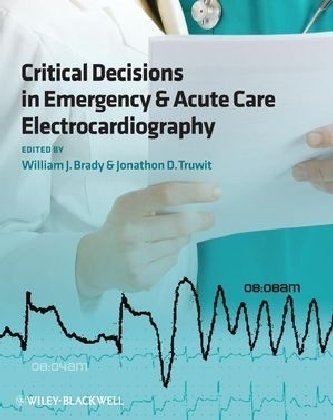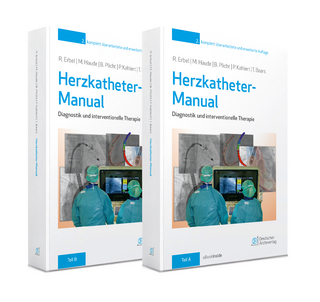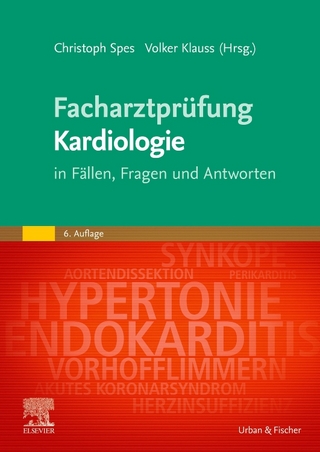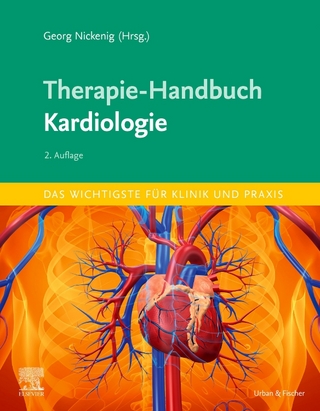
Critical Decisions in Emergency and Acute Care Electrocardiography
Wiley-Blackwell (Verlag)
978-1-4051-5906-7 (ISBN)
This is a unique format among textbooks with an ECG focus. The clinical scenarios cover the issues involved in detecting and managing major cardiovascular conditions. Focused, structured discussion then solves these problems in a clinically relevant, rapid, and easy to read fashion.
This novel approach to ECG instruction is ideal for practicing critical care and emergency physicians, specialist nurses, cardiologists, as well as students and trainees with a special interest in the ECG.
William Brady, Department of Emergency Medicine, University of Virginia School of Medicine Jonathon Truwit, Pulmonary and Critical Care Medicine, University of Virginia Health Systems
Section Editors vii
Contributors viii
Preface xi
Forewords xii
Part 1 The ECG in Clinical Practice 1
1 What are the clinical applications of the ECG in emergency and critical care? 3
2 What are the indications for the ECG in the pediatric emergency department? 12
3 What are the limitations of the ECG in clinical practice? 19
4 Is the ECG indicated in stable non-cardiac patients admitted to the hospital? 24
5 What is the use of the ECG in preoperative assessment and cardiovascular risk stratification? 28
6 Which patients benefit from continuous electrocardiographic monitoring during hospitalization? 33
Part 2 The ECG in Cardinal Presentations 39
7 How should the ECG be used in the syncope patient? 41
8 How should the ECG be used in the chest pain patient? 49
9 How should the ECG be used in the dyspneic patient? 58
10 How should the ECG be used in the patient with altered mentation? 64
11 How should the ECG be used in the patient during and following cardiac arrest? 69
12 What is the impact/proper role of the ECG in the undifferentiated cardiorespiratory failure patient? 75
Part 3 The ECG in ACS 83
13 What is the role of the ECG in ACS? 85
14 What pseudoinfarction patterns mimic ST elevation myocardial infarction? 92
15 What ECG changes might myocardial ischemia cause other than ST segment elevation or Q waves and what are the differential diagnoses of these changes? 103
16 What is a hyperacute T Wave? 115
17 What is the significance of Q waves? 122
18 What are the ECG indications for additional electrocardiographic leads (including electrocardiographic body-surface mapping) in chest pain patients? 128
19 What further diagnostic adjuncts to the standard 12-lead ECG may help to diagnose ACS? 138
20 Is serial electrocardiography (serial ECGs and ST segment monitoring) of value in the ECG diagnosis of ACS? 148
21 What QRS complex abnormalities result in ST segment elevation that may mimic or obscure AMI? 155
22 What are the electrocardiographically silent areas of the heart? 167
23 What is the value of the prehospital acquired 12-lead Ecg? 176
24 What are the electrocardiographic indications for reperfusion therapy? 182
25 What are the ECG manifestations of reperfusion and reocclusion? 195
26 Does localization of the anatomic segment/identification of the infarct-related artery affect early care? 204
27 Can the ECG be used to predict cardiovascular risk and acute complications in ACS? 216
Part 4 The Dysrhythmic ECG 231
28 Can the electrocardiogram determine the rhythm diagnosis in narrow complex tachycardia? 233
29 Can the ECG guide treatment of narrow QRS tachycardia? 244
30 How can the ECG guide the diagnosis and management of wide complex tachycardias? 251
31 Can the ECG guide management in the patient with bradydysrhythmias? 267
32 What are the electrocardiographic indications for temporary cardiac pacing? 276
33 Can the ECG accurately diagnose pacemaker malfunction and/or complication? 284
34 How can the ECG guide acute therapy in the Wolff Parkinson White (WPW) patient? 295
35 What is the role of the ECG in PEA cardiac arrest scenarios? 303
Part 5 The ECG in Critical Care 315
36 What is the role of the ECG in the critically ill non-coronary patient? 317
37 Can the ECG distinguish between coronary and non-coronary etiologies in the critically ill patient? 326
38 What is the role of the ECG in therapeutic considerations/ medical management decisions in the critically ill patient? 335
39 Can the ECG predict risk in the critically ill noncoronary patient? 345
40 What is the proper role of the ECG in the evaluation of patients with suspected PE? 354
41 What is the role and impact of the ECG in the patient with hyperkalemia? 362
42 What is the role and impact of the ECG in the patient with electrolyte abnormalities other than hyperkalemia? 371
43 What is the role of the ECG in the hypothermic patient? 378
44 What are the non-ACS “deadly” ECG presentations? 384
Part 6 The Toxicologic ECG 395
45 How useful is the ECG in the evaluation of the poisoned patient? 397
46 Can the ECG guide management in the critically ill poisoned patient? 402
47 Do characteristics of the QRS complex in the poisoned patient correlate with outcome? 407
48 What is the treatment for wide complex dysrhythmias in the poisoned patient? 412
Part 7 Electrocardiogaphic Differential Diagnosis 417
49 What is the ECG differential diagnosis of ST segment elevation? 419
50 What is the ECG differential diagnosis of ST segment depression? 428
51 What is the ECG differential diagnosis of the abnormal T wave? 436
52 What is the ECG differential diagnosis of narrow complex tachycardia? 444
53 What is the ECG differential diagnosis of wide complex tachycardia? 452
54 What is the ECG differential diagnosis of bradycardia? 461
55 What is the ECG differential diagnosis of the abnormally wide or large QRS complex? 469
56 What is the ECG differential diagnosis of a prolonged QT interval? 479
| Erscheint lt. Verlag | 2.1.2009 |
|---|---|
| Verlagsort | Hoboken |
| Sprache | englisch |
| Maße | 221 x 277 mm |
| Gewicht | 1560 g |
| Themenwelt | Medizinische Fachgebiete ► Innere Medizin ► Kardiologie / Angiologie |
| Medizin / Pharmazie ► Medizinische Fachgebiete ► Notfallmedizin | |
| Studium ► 2. Studienabschnitt (Klinik) ► Anamnese / Körperliche Untersuchung | |
| ISBN-10 | 1-4051-5906-5 / 1405159065 |
| ISBN-13 | 978-1-4051-5906-7 / 9781405159067 |
| Zustand | Neuware |
| Informationen gemäß Produktsicherheitsverordnung (GPSR) | |
| Haben Sie eine Frage zum Produkt? |
aus dem Bereich


